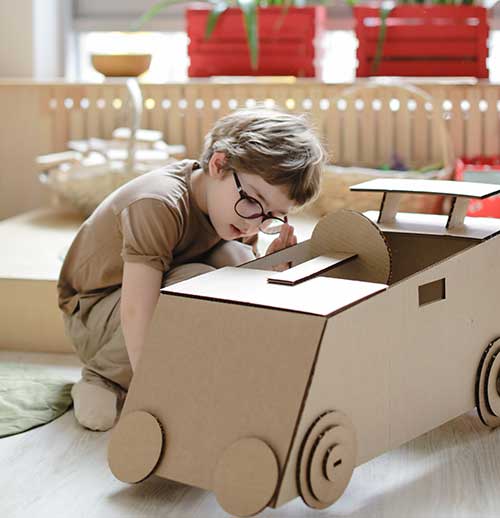
While moving to a new home is an exciting adventure, it is worth considering the environmental impact of the process. Traditional moving methods often generate significant waste and contribute to carbon emissions. However, by adopting sustainable practices, you can make your move eco-friendly and contribute to a greener future.
This article will provide you with nine valuable tips for sustainable moving. From decluttering and donating to choosing green transportation and packing materials, these tips will help you minimise waste, reduce your carbon footprint, and make your move environmentally friendly.
Whether moving locally or embarking on a long-distance relocation, these sustainable moving tips will guide you towards a more eco-conscious and responsible moving experience.
Declutter and donate
Decluttering and donating before your move is crucial in making your moving process more sustainable. So take the time to review your belongings and identify items you no longer need or use.
Instead of simply discarding them, consider donating them to local charities, thrift stores, or organisations in need. Doing this reduces the number of things you have to move and prevents perfectly usable items from ending up in landfills.
By giving your belongings a second life with someone else who can benefit from them, you contribute to a circular economy and promote a culture of reuse and sustainability.
Additionally, donating items can positively impact society by supporting individuals and communities in need. So, before you start packing, take the opportunity to declutter responsibly and make a difference through donations.

Use eco-friendly packing materials
Instead of relying on traditional cardboard boxes and excessive amounts of bubble wrap, consider using eco-friendly packing materials.
Reusable plastic bins, recyclable cardboard boxes and biodegradable packing peanuts made from renewable sources are excellent options to minimise waste. These eco-friendly materials can be used multiple times, reducing the demand for single-use packaging. Additionally, explore innovative packing materials like biodegradable air pillows or packing paper made from recycled materials.
By choosing eco-friendly packing materials, you can significantly reduce your environmental impact while ensuring the safety and protection of your belongings during the move.

Choose green transportation
As well as green packaging, choosing green transportation for your move is a powerful way to reduce your carbon footprint and positively impact the environment.
If you’re moving locally, consider alternatives to solely relying on a moving truck. Utilise public transportation, carpool with friends or family, or even use a bike for shorter distances. These options not only reduce emissions but also alleviate traffic congestion.
For long-distance moves, research moving companies using Muval to find removalists that prioritise eco-friendly practices, such as using fuel-efficient vehicles or offsetting their carbon emissions.
By opting for green transportation methods, you can significantly decrease the environmental impact of your move and contribute to a more sustainable future.
Rent reusable moving supplies
Renting reusable moving supplies is a smart and sustainable choice when planning your move.
Instead of purchasing brand-new packing materials that will likely end up as waste after a single use, consider renting reusable options. Several companies offer services that allow you to rent plastic bins, crates, and other essential moving supplies.
Not only does this reduce the demand for new materials, but it also minimises waste generation. These reusable supplies are durable and designed to withstand multiple moves, making them a cost-effective and eco-friendly option.
By renting instead of buying, you contribute to the circular economy and actively participate in reducing the environmental impact of your move.
Pack strategically
Strategic packing is an often overlooked aspect of sustainable moving. But it does make a difference. By taking a thoughtful approach to packing, you can minimise the number of trips required and therefore reduce your fuel consumption.
Start by packing items you use less frequently, such as seasonal clothing or decorations. Be sure to optimise the space in your boxes by utilising every inch and filling gaps with towels or clothing to avoid the need for excessive packing materials.
Consider using items you already own, such as suitcases and duffel bags, as additional storage containers. Adopting this approach helps reduce waste, save time and contribute to a more sustainable and efficient moving process.

Opt for green cleaning products
Opting for green cleaning products is a crucial aspect of sustainable moving.
Traditional cleaning products often contain harmful chemicals that can negatively impact both the environment and your health. By choosing eco-friendly cleaning alternatives, you can minimise your carbon footprint and promote a healthier living environment.
Look for cleaning products labelled as non-toxic, biodegradable and made from natural ingredients. These products are designed to be gentle on the environment while still effectively cleaning your new home.
By opting for green cleaning, you reduce the release of harmful pollutants into the air and water systems and support companies that prioritise sustainability. Switch to eco-friendly cleaning products and contribute to a more sustainable move that is both clean and responsible.
Notify service providers in advance
Before you relocate, remember to inform utility companies such as electricity, water, and gas providers about your upcoming move. By doing so, they can adjust their services accordingly and avoid unnecessary energy consumption or waste at your old residence.
Providing advance notice allows them to schedule metre readings, adjust billing cycles, and avoid unnecessary resource consumption. Additionally, it ensures that you receive the necessary services promptly at your new home, minimising any potential delays or disruptions.
Taking the time to notify service providers in advance helps streamline the moving process and contributes to a more sustainable and efficient use of resources.
Recycle and dispose responsibly
You may find items that cannot be donated, reused, or repurposed throughout the moving process. So it is important to research local recycling centres and disposal methods for materials like electronics, batteries, and hazardous substances.
These items should never be dumped in regular trash bins, as they can harm the environment and pose risks to human health. Instead, find designated recycling facilities or drop-off points that accept these specific items.
Properly recycling or disposing of materials ensures that they are handled in an environmentally responsible manner. By making the extra effort to recycle and dispose of items responsibly, you reduce landfill waste and protect the planet for future generations.
Unpack mindfully
As you settle into your new home, take the opportunity to unpack in a conscious and eco-friendly manner.
Reuse packing materials, such as boxes and bubble wrap (boxes can be used for fun craft projects for the kids), or find creative ways to repurpose them for storage or future use. Instead of discarding cardboard boxes, break them down for recycling or consider donating them to others who may need them.
Minimise packaging waste by opting for bulk purchases and avoiding excessive packaging when shopping for new household items. At the same time, embrace a minimalist approach by carefully considering what you truly need and resist the temptation to accumulate unnecessary belongings.
When unpacking mindfully, you reduce waste and create a clutter-free and sustainable living space that aligns with your values of responsible consumption and environmental stewardship.


Conclusion
Adopting sustainable practices during your move can significantly reduce your environmental impact and contribute to a greener future. Rest assured, you will make a positive difference by following the nine tips outlined in this article.
Remember, even small actions can have a significant impact when it comes to sustainability. By implementing these tips, you make your move more efficient and contribute to a healthier planet for future generations. So, why not commit to more sustainable moving practices and create a greener world one move at a time?
 My Favourites
My Favourites









Speak Your Mind